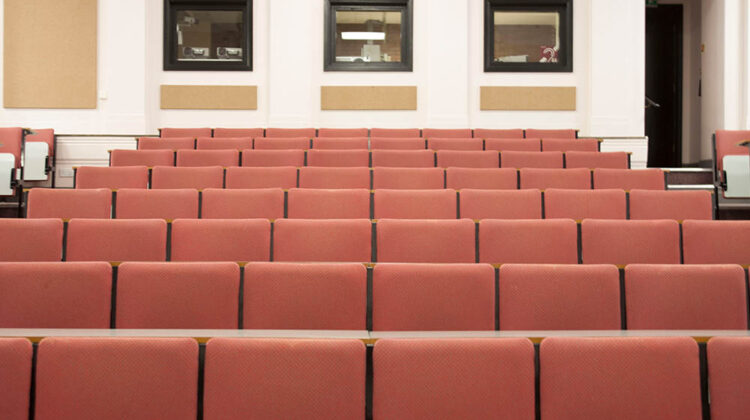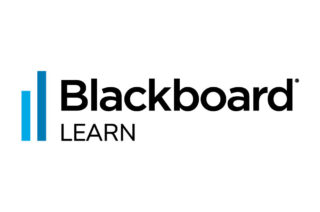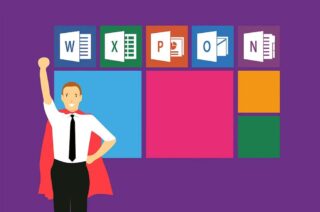Showcase and Discussion of Active Learning Lectures

At the beginning of April 2022 there was an online showcase and discussion of active learning lectures, bringing together speakers from across the Faculty. The talks from the showcase event are uploaded here and are of particular relevance to anyone who is interested in ways of getting students to actively learn within the lecture room, be it through a style of lecturing, technology or activities.
James Brooks – Welcome to the SETA Showcase Active Learning in Lectures
James Brooks – Welcome to Showcase and Discussion of Active Learning Lectures slides
Terry Wyatt – “Student-led” Lectures in Physics
Classical Electrodynamics (3rd year Theoretical Physics) Richard Feynman said “What I cannot create, I do not understand”. My ideal lecture is one in which I write down only things the students tell me to write. I stimulate the proceedings by asking (sometimes rather leading) questions. Even in a class of well over a hundred students, I get very active participation. Even students who don’t feel confident enough to volunteer a suggestion/answer nevertheless benefit from thinking through the question. The ultimate aim is to encourage the students to not just “follow” the lecture, but to be trying to anticipate where we shall be going next. Making use of roughly half of last year’s pre-recorded mini-lectures has freed me from the need to present all the core material in live lectures. This has allowed me to devote roughly half of the lecture slots this year to interactive “problem solving” along the lines discussed above. Feedback from the students to this approach has been very positive.
Nikesh Solanki – Elements of Problem-Centred Learning in Mathematics
In today’s job market graduate skills such as problem solving are much more highly prized than the ability to retain facts. However, in mathematics education, it is very easy to have a heavier focus on knowledge retention rather than problem solving. In this talk I shall discuss how I have tried to address this problem in my own teaching by using elements of problem-based learning (PBL) approaches. The aspect I have borrowed most heavily is the use of problems to motivate the topic to be learned. This involves setting the students a problem at the beginning of the session, then discussing the problem as a class and from the discussion the purpose of the session’s study is elicited. To facilitate class discussion I used dialogic teaching techniques and digital tools such as Mentimeter. In this talk I will give further details on how I implemented this strategy and discuss what the impact this strategy seems to have had based on student and peer feedback. I will also discuss the challenges of implementing such a strategy in a Blended Learning approach and possible ways of meeting those challenges.
Nikesh Solanki – Elements of Problem-Centred Learning in Mathematics slides
Mark Quinn – Live Demonstrations in Lectures
MACE61021 has live demonstrations of equipment and techniques taught to the students through traditional lectures to help reinforce their learning. Each topic has some level of practical engineering demonstration and also an application to stretch their imagination. Students are often involved in the demonstrations which are commonly built in the programming languages taught earlier in the course. Demonstrations ranged from infrared thermography to Fourier analysis.
Mark Quinn – Live Demonstrations of Equipment slides
Charles Darko – Improving Interaction and Engagement within Large Cohorts
Improving Interaction and Engagement within large cohorts – There are several strategies in engaging with large student cohorts. Some of the ways are to have good subject knowledge, more formative assessments and varied approaches to online students’ engagements. The research into students’ engagements gave several avenues and pathways most of the departments can tap into and my presentation will highlight those aspects. In all, the cognitive learning theory suggests that learning is described as the creation of knowledge and conceptual development and can include the storing of knowledge in the brain and how it is used.
Charles Darko – Improving Interaction and Engagement within Large Cohorts slides
Lloyd Cawthorne – Active Learning in Physics Lectures
Active learning techniques have been deployed in three core courses in Physics & Astronomy: Y1 classical thermodynamics, Y2 introductory programming and Y3 introductory nuclear physics. These are varied in terms of level, content and delivery method. I will summarise how each of these are delivered and what appears to work and what does not commenting on student feedback in each.
Lloyd Cawthorne – Active Learning in Lectures slides
Janine Dixon and Fiona Velez-Colby – Deep Learning Through Constructive Alignment
Within two units on the Materials Fashion Business Technology UG programme, we constructively aligned our group learning activities in the seminars with the online lectures with the aim of positively impacting student engagement and experience. Within the talk, we will consider whether students engage more deeply with online lectures when linked to their group learning activities in the seminars and if the student’s learning journey is enhanced through utilising group activities to encourage participation learning in the lectures.
Janine Dixon & Fiona Velez-Colby – Deep Learning Through Constructive Alignment slides
Simon Watson – Synchronous Computer-Based Tutorials
EEEN30072 has adopted a flexible learning approach which makes use of computer-based tutorial questions during the synchronous session. The sessions are run in a computer cluster/lab where, each week, students will undertake a series of software-based tutorial questions, either individually, or as a group, which reinforce the asynchronous material. Each tutorial question takes 10 – 15 minutes to complete. Whilst they are doing the questions, I wander round providing help, answering questions and having conversations with them (a good way to build relationships with them). After each question, the class comes together to discuss the answers.
Simon Watson – Synchronous Computer-Based Tutorials slides
Gareth Henshall – Live Coding in Python
COMP16321 has used live coding lectures as a means to engage students and challenge their thinking in a large lecture theatre. These sessions are run in a traditional lecture theatre and students are encouraged to follow along on their own laptops (if available). We planned deliberate mistakes into the code so that we could demonstrate error handling but this also acted as a good method for seeing which students were engaged with what was being said. Occasional accidental mistakes were made which made for a lively environment when the students spotted the error but as staff we had not.


